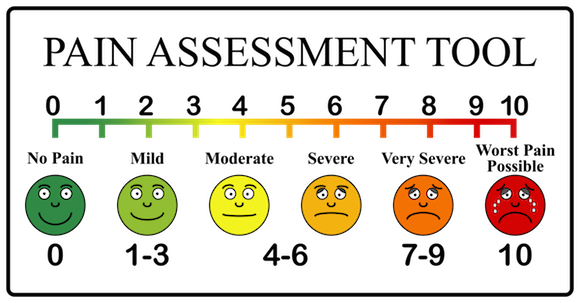HEALTH & MEDICINE REPORT: You’re Wrong, Pain Is Not a Vital Sign
By Myles Gart, MD // February 16, 2018
Groups call on JC and CMS to re-evaluate policies that could lead to opioid overprescribing

EDITOR’S NOTE: I’ve often asked myself, “What changed over the past 15 years in the management of pain that might explain the emergence of today’s opioid crisis?”
During my clinical career as a general and vascular surgeon from 1975-2002, opioids such as Demerol and Morphine were used for immediate post-operative pain in the hospital, and other opiates such as Codeine, hydrocodone and oxycodone prescribed in limited volume over 7-10 days for pain control at home. Any pain requiring opioid analgesia over 14 days after surgery was suspect and triggered a comprehensive investigation into what may be causing the prolonged pain so that the etiology could be directly managed. To my knowledge, none of my patients ever became addicted to opioids.
Unfortunately, the concept of pain and its management were transformed in 2001 when The Joint Commission (JC), the dominant accrediting and certifying authority for health care organizations and programs in the United States, rolled out its Pain Management Standards, which established the idea of pain as a “fifth vital sign.” It required healthcare providers to ask every patient about their pain, given the perception at the time that pain was under-treated.
This led to the Center for Medicare and Medicaid Services (CMS) adding patient-related questions to HCAHPS, the patient satisfaction survey used to determine hospital reimbursement rates. However, pain is a symptom, not a vital sign such as blood pressure, heart rate, respiratory rate, and temperature, which can be measured objectively. The subjective nature of pain clouded the development of effective evidence-based pain management, and the linking of reimbursements to patient satisfaction related to pain treatment resulted in opioid overprescribing.
Since that time, the U.S. has experienced a surge in opioid prescriptions and, subsequently, a progressive increase in overdoses and deaths tied to these painkillers. According to the National Safety Council, every day, 60 people die from opioid pain medications. That’s 22,000 people every year.
In this article from KevinMD.com, Dr. Myles Gart, an anesthesiologist and pain specialist, provides a veracious, realistic perspective on the evolution of this crisis and a compelling strategy for the healthcare industry to reverse this epidemic of opioid deaths.
— Dr. Jim Palermo, Editor-in-Chief

After years of exaggeration, misinformation and a national epidemic of opioid and heroin abuse, the nation is finally coming to terms with the fact that pain is not the fifth vital sign.
This heresy, as I understand it, has existed for close to three decades and, in my opinion, has been directly responsible for the deaths of thousands of patients and lethal drug overdoses of hundreds of thousands of American citizens. The misguided acceptance of pain as the fifth vital sign has been and still is the single biggest mistake in the history of modern medical pain management.
In the early 1990s, the American Pain Society opined that there was a national epidemic of untreated pain in our nation’s hospitals and announced that pain should be classified as the “fifth vital sign.” This assertion is riddled with many problems. Vital signs are clinical measurements, specifically: pulse rate, temperature, respiration rate and blood pressure, that indicate the state of a patient’s essential body functions. These clinical measures are very objective in character and include an assortment of relevant numerical values.

Pain is a subjective feeling that is impossible to accurately and consistently quantify across patient populations.
Therefore, for providers to assess pain as a vital sign, they must ascribe a numerical value for it, such as zero to ten based on the Universal Numeric Pain Scale. As a result of equating pain as a vital sign, medical practitioners must come up with a reliable and effective treatment if and when a patient subjectively rates their pain high on the scale.
In 1998, the Federation of American Medical Boards issued a policy reassuring physicians that “in the course of treatment,” large doses of opioids were acceptable. In 2001, the Joint Commission mandated that hospitals across the country assess pain on each patient they treat.
While not stating how facilities should assess pain, the nation relied on what the prevailing thought that pain should be considered the fifth vital sign and treated on the zero-to-ten pain scale. With the support of the Joint Commission, The Federation of American Medical Boards urged individual state medical societies to make the under treatment of pain punishable for the first time.

With misinformation and external pressure by state and national oversight agencies, American hospitals and medical professionals were “steered” to overtreat acute and chronic pain. Failure to comply was tantamount to patient abuse and battery, punishable by citations from medical boards and Joint Commission.
Thus, this “virtual” national epidemic of untreated pain and subsequent adoption of pain as the fifth vital sign has, in my view and the view of many clinicians, resulted in the brutal, harsh reality of a national opioid and heroin crisis. As evidence, since pain became the “fifth vital sign,” the number of prescriptions for opioids have escalated from around 76 million in 1991 to nearly 220 million in 2011.
CLICK HERE for recent data from the American Society of Addiction Medicine showing that the adoption of pain as the fifth vital sign resulted in many adverse and unintended consequences, and for Dr. Gart’s vision for the healthcare industry on how to pull ourselves out of this opioid abyss and begin to reverse these sobering statistics.
CLICK HERE FOR BREVARD COUNTY NEWS













